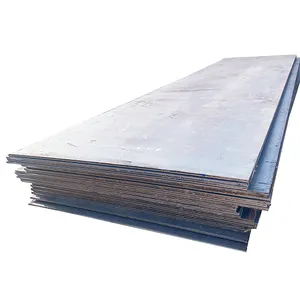
NM400 NM450 NM500 Wear Resistance Abrasion Resistant Carbon Steel Plate JIS Certified With Cutting Welding Processing Services

High Quality China Aisi 1018 Astm A50 A283 A36 SS400 ST37 Hardness Metal Sheets Iron Carbon Steel Sheet Plate













Low alloy steel plates are a specialized category of steel products known for their strength and versatility. These plates are crafted with a precise chemical composition that enhances their mechanical properties, making them suitable for a wide range of industrial applications. The term low alloy steel plate refers to steel with a variety of alloying elements in total amounts between 1% and 5%, improving its mechanical properties.
The hsla steel plate, or high-strength low-alloy steel plate, is a subset of this category, designed to be lighter yet stronger than conventional steel. These plates are commonly utilized in environments where durability and strength are paramount, such as in the construction of containers, ships, and vehicles. Additionally, they serve an essential role in the manufacturing of small precision tools, owing to their enhanced wear resistance.
Low alloy steel plates come in various grades and specifications, including popular standards such as ASTM, BS, and DIN. These plates can be processed through techniques like punching, welding, and bending, catering to diverse industrial needs. The material composition typically includes carbon steel and may feature specific grades like q235 or sgcc, known for their formability and strength.
The primary advantage of using low alloy steel plate is its superior strength-to-weight ratio. This characteristic is particularly beneficial in applications requiring lightweight materials that can withstand high stress. Furthermore, the hsla steel sheet variant offers enhanced resistance to corrosion and oxidation, extending the life of products and structures that incorporate these materials.
Selecting the appropriate low alloy steel plate for a project involves considering the intended application and the specific properties required. Factors such as tensile strength, impact resistance, and flexibility should guide the choice of alloy and plate thickness. It is essential to match the material properties with the demands of the application to ensure optimal performance.
In today's industrial landscape, sustainability is increasingly important. Low alloy steel plates are recyclable and can be repurposed at the end of their life cycle, contributing to environmental conservation efforts. The production of hsla steel plate also tends to have a lower carbon footprint compared to traditional steel, making it a more eco-friendly option for industries looking to reduce their environmental impact.